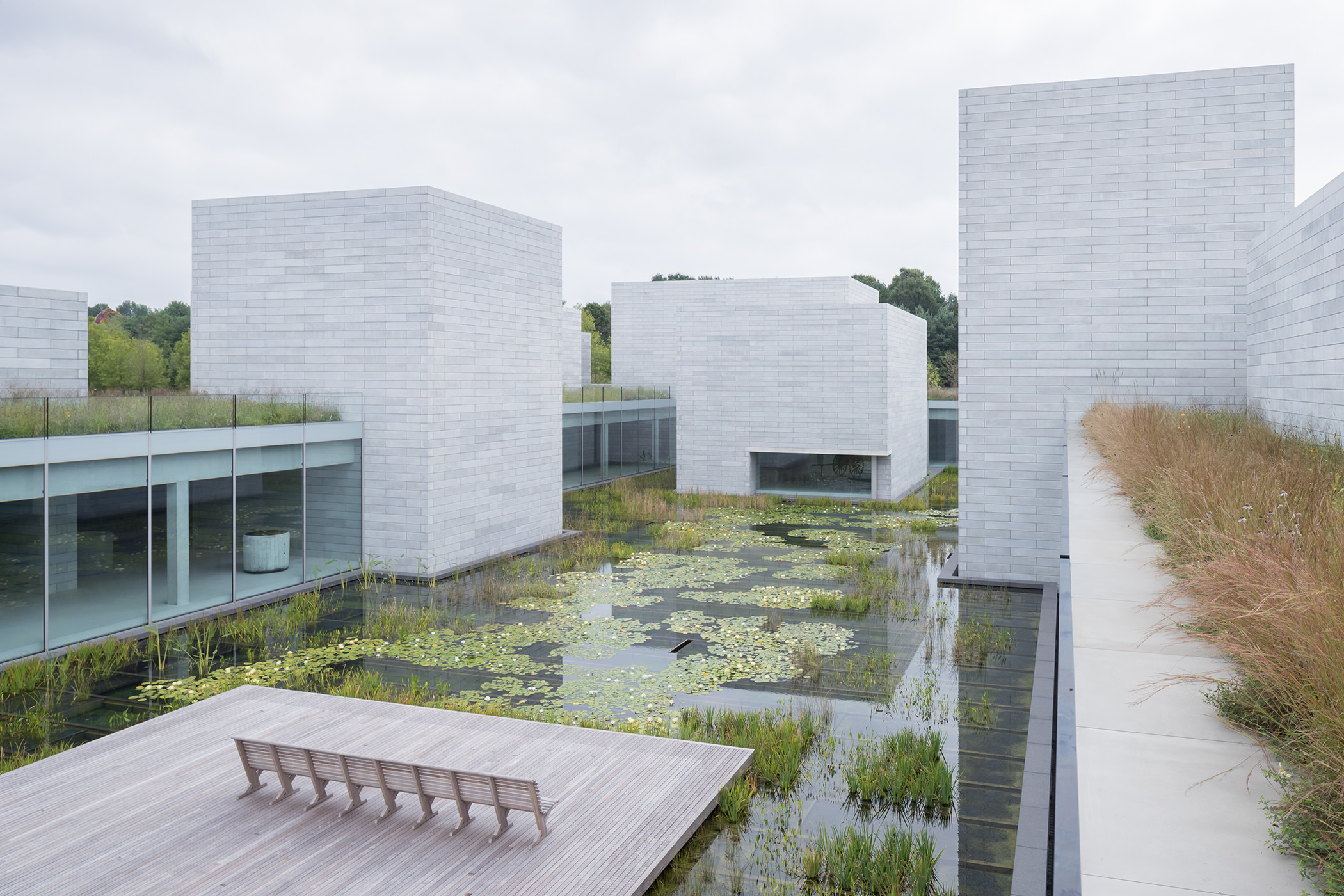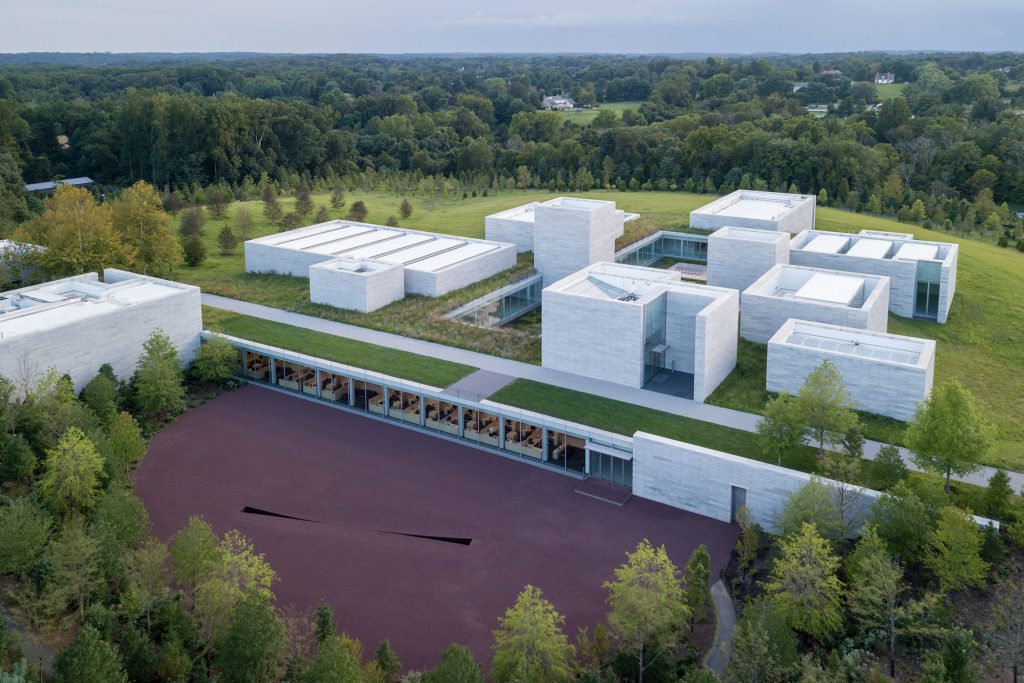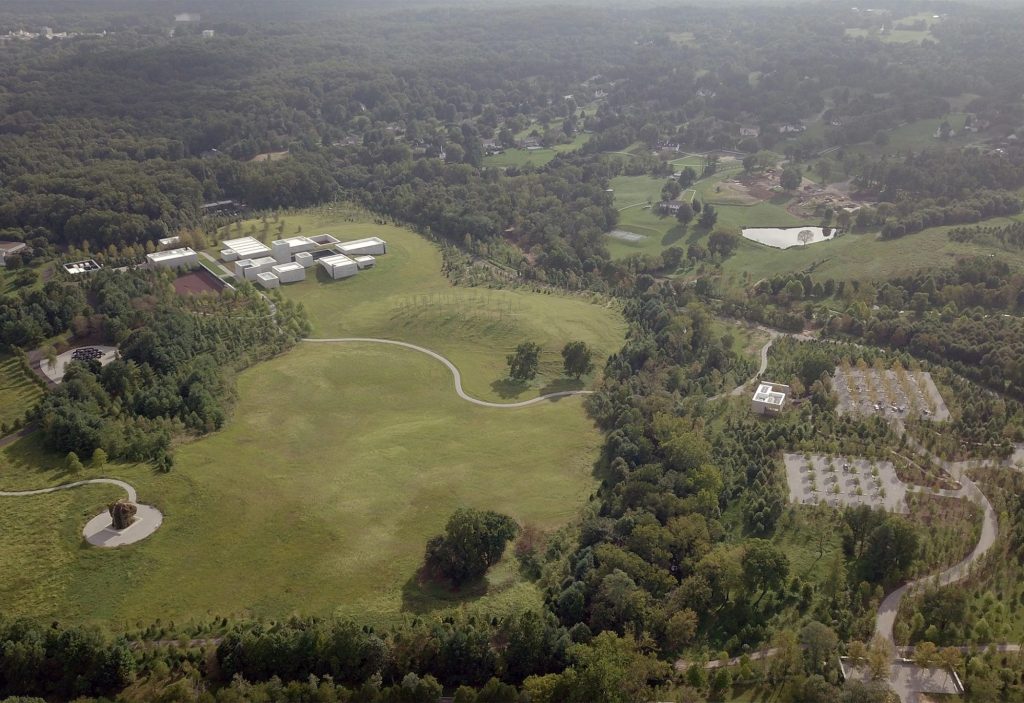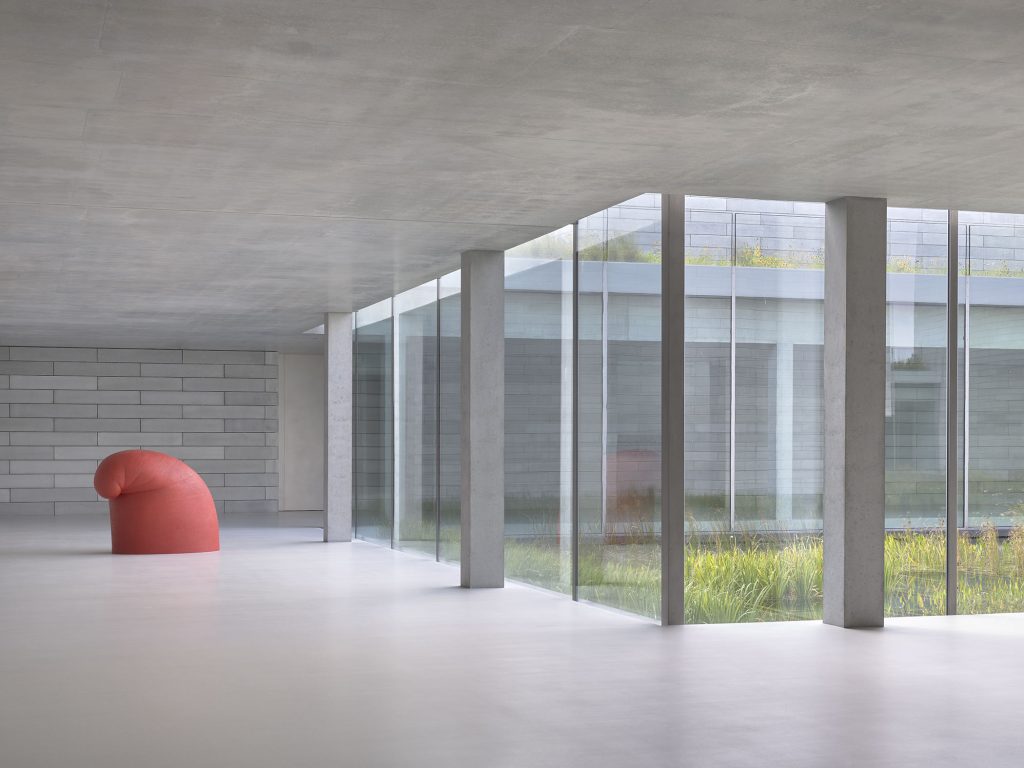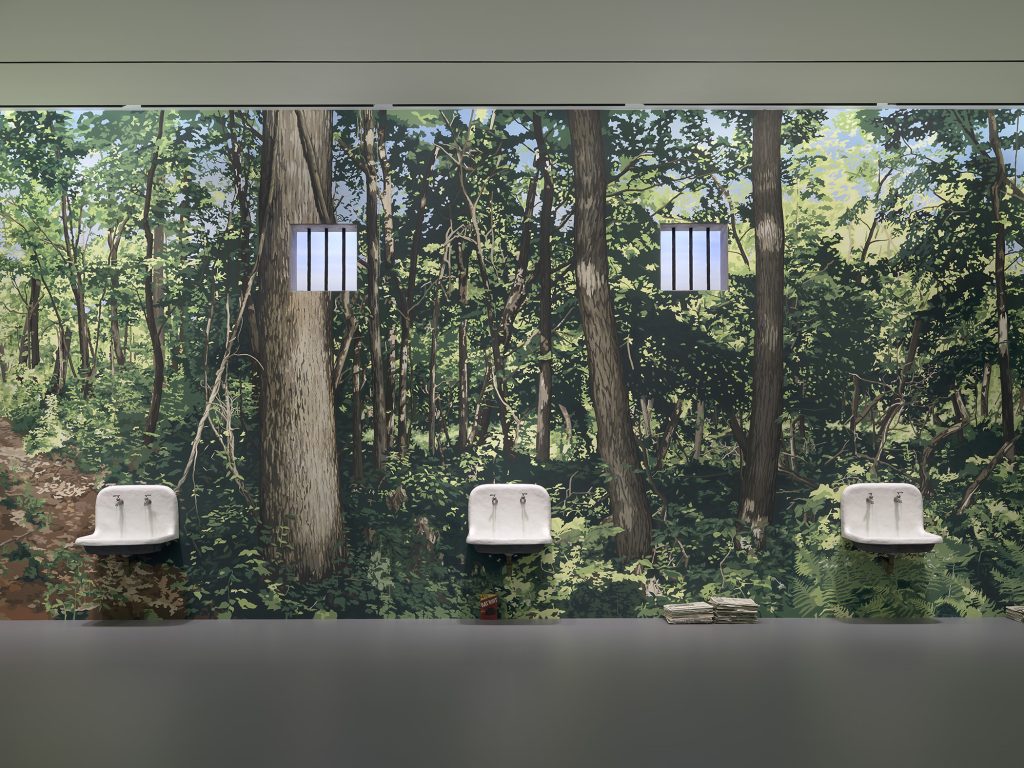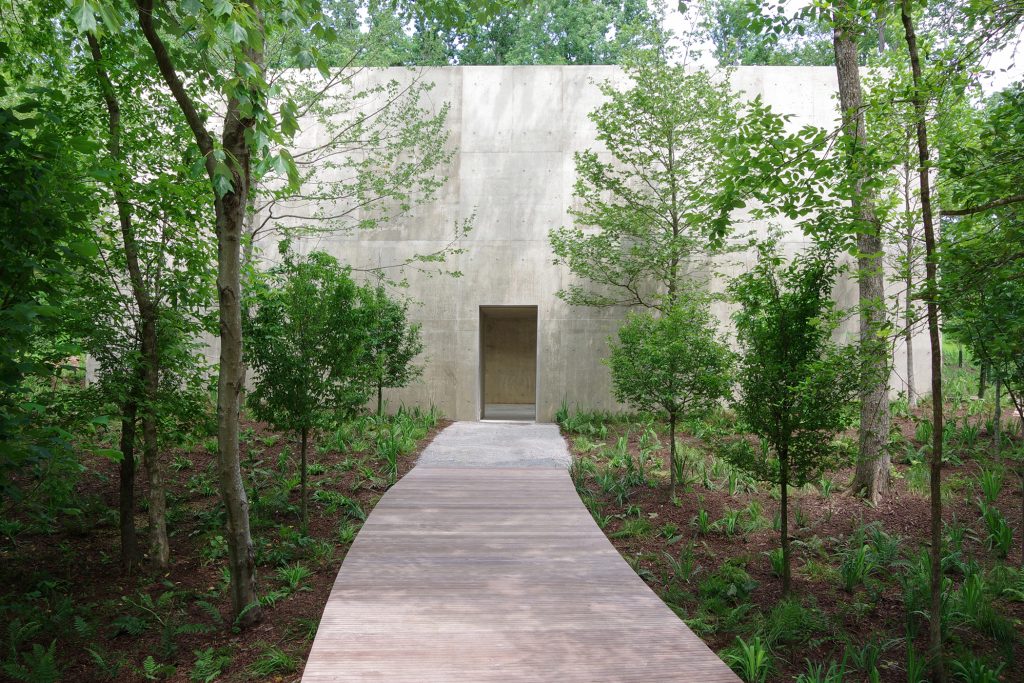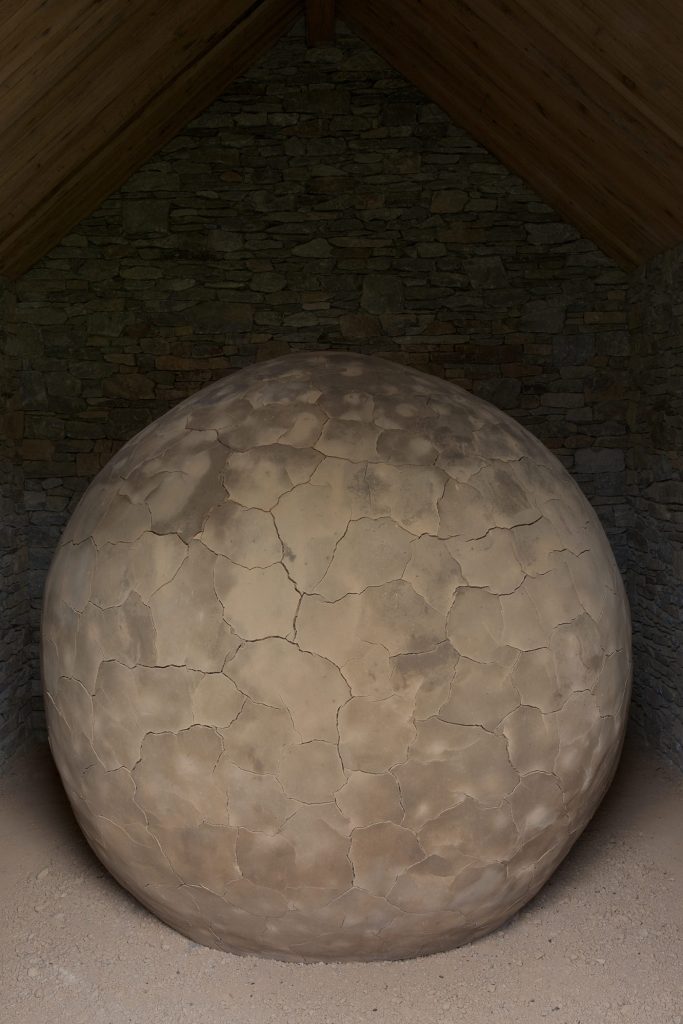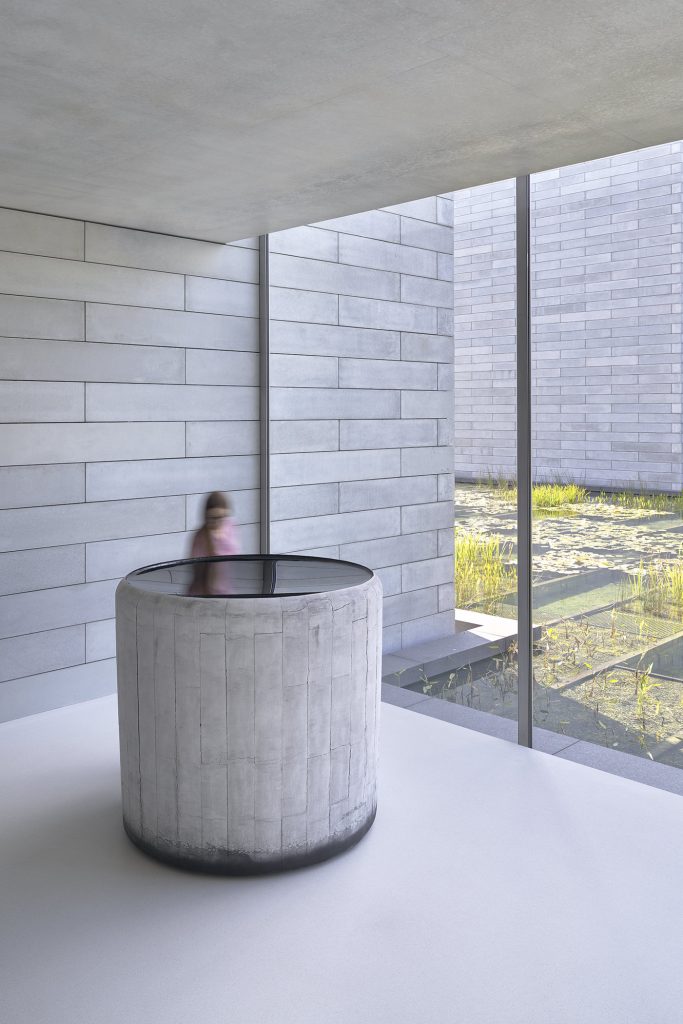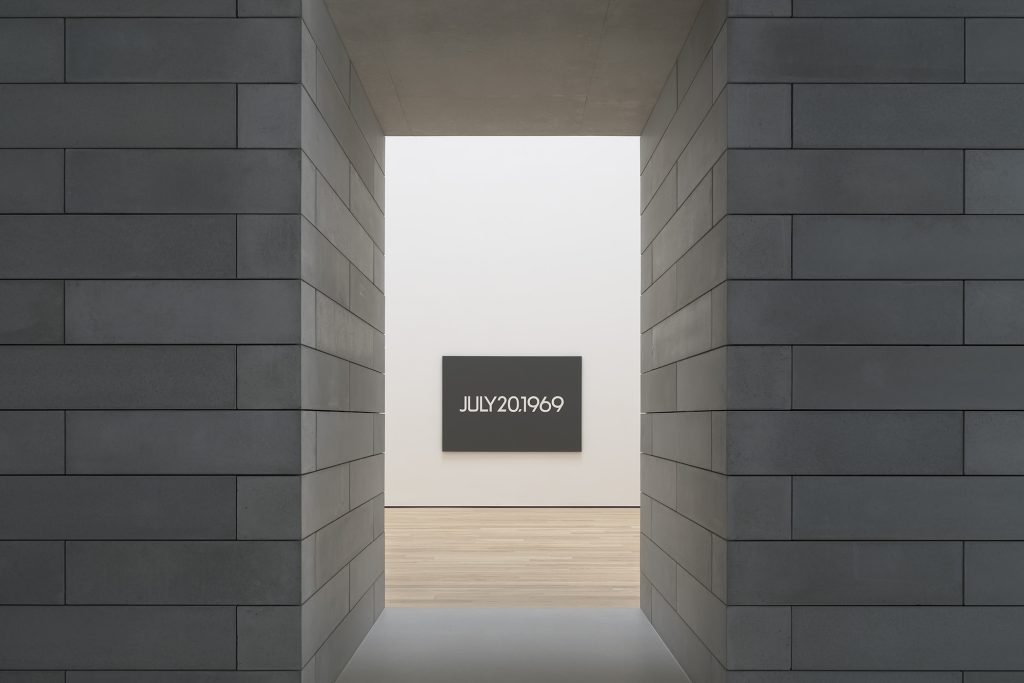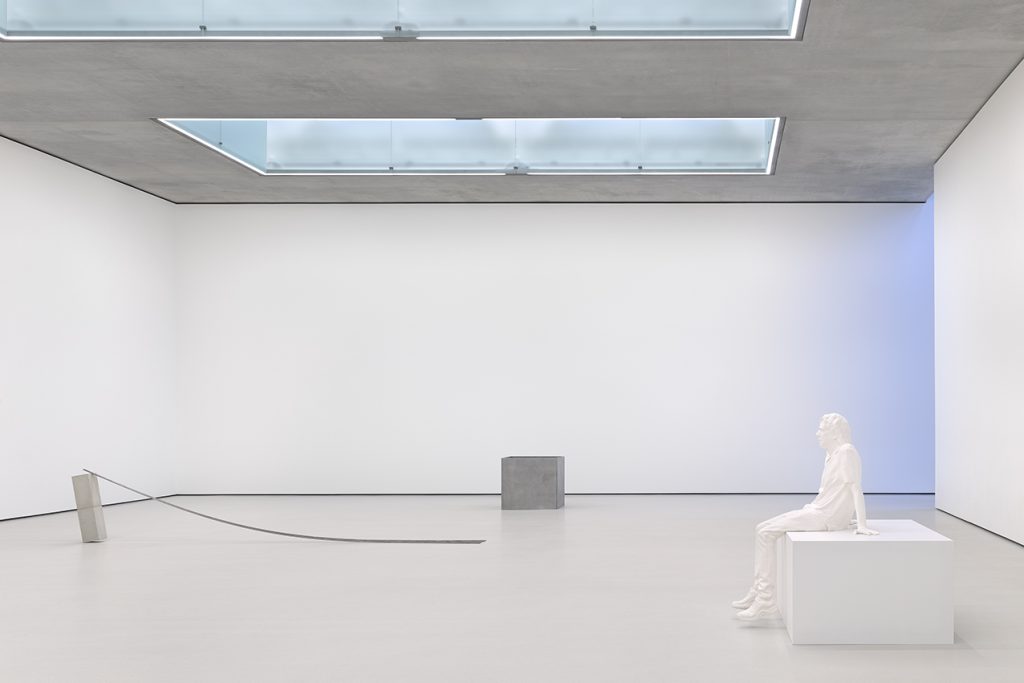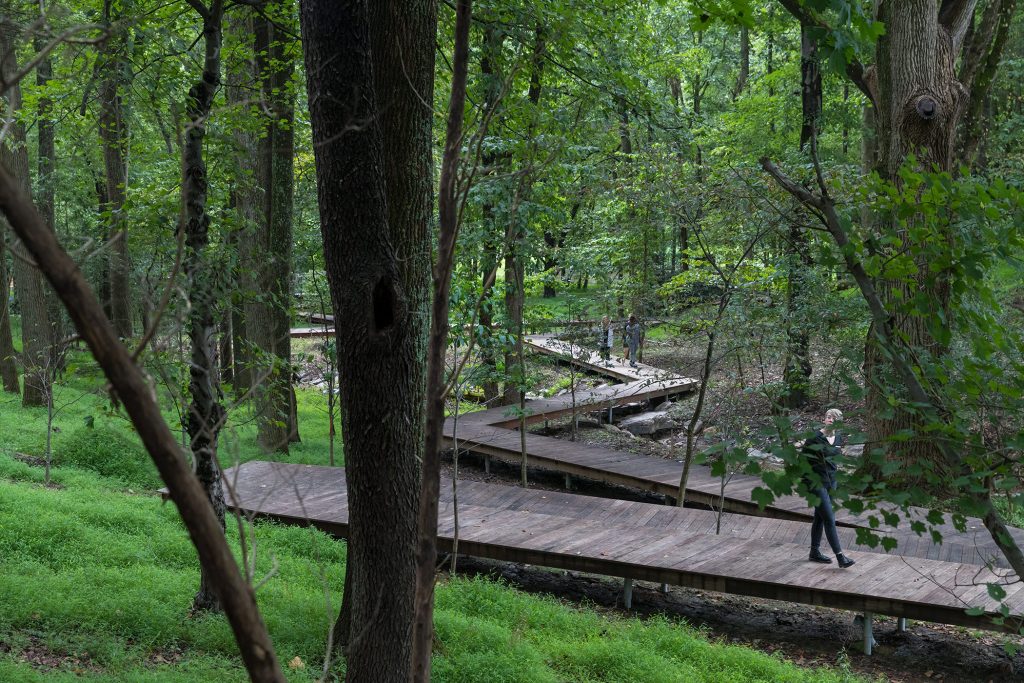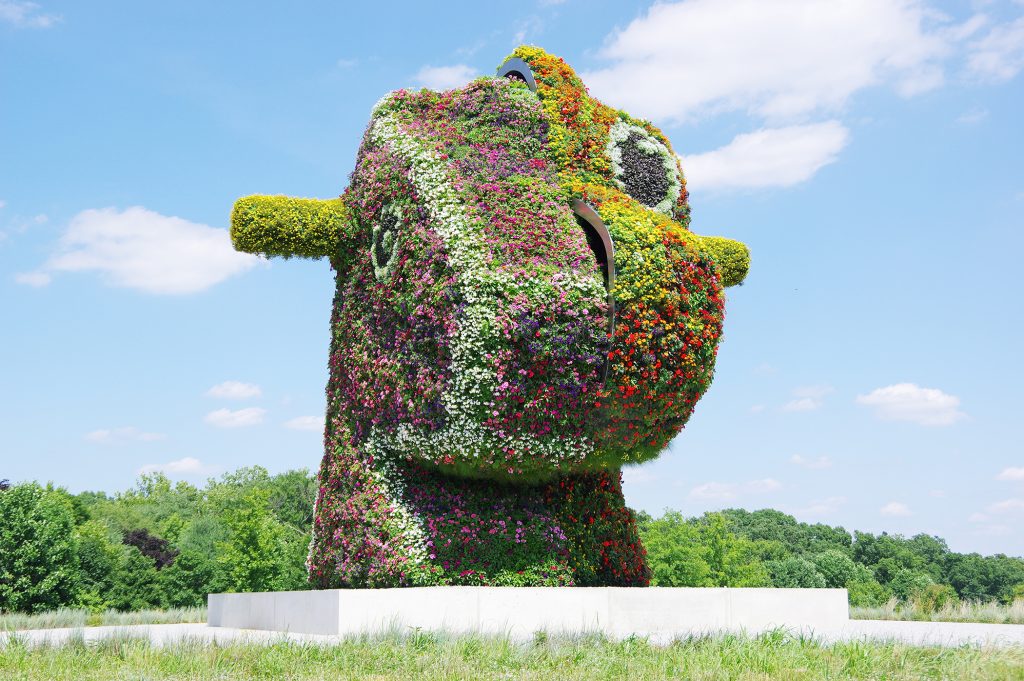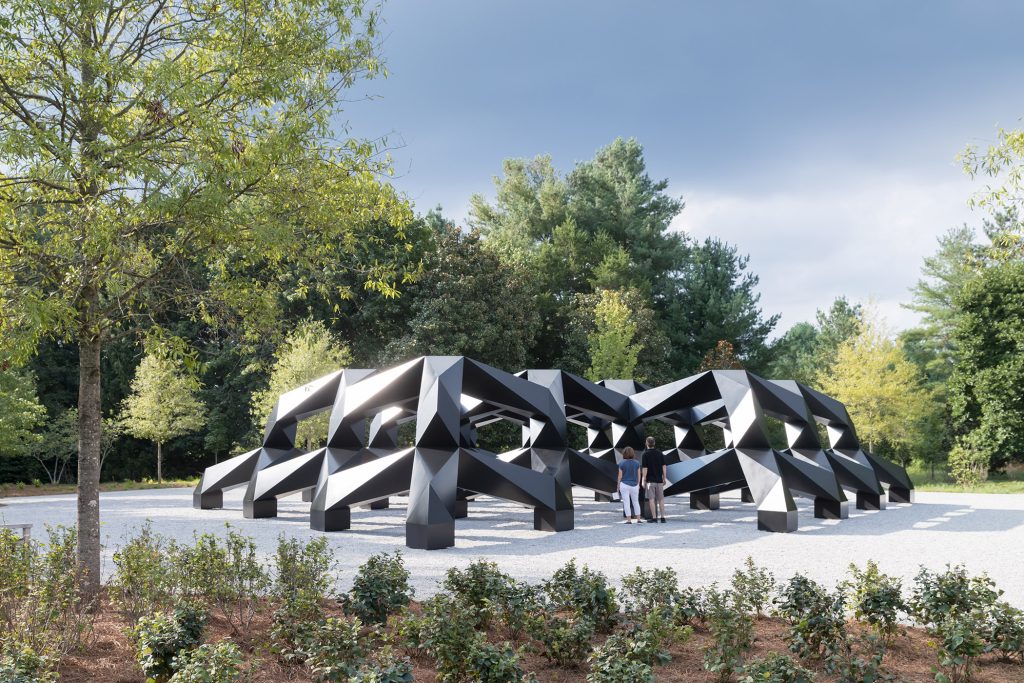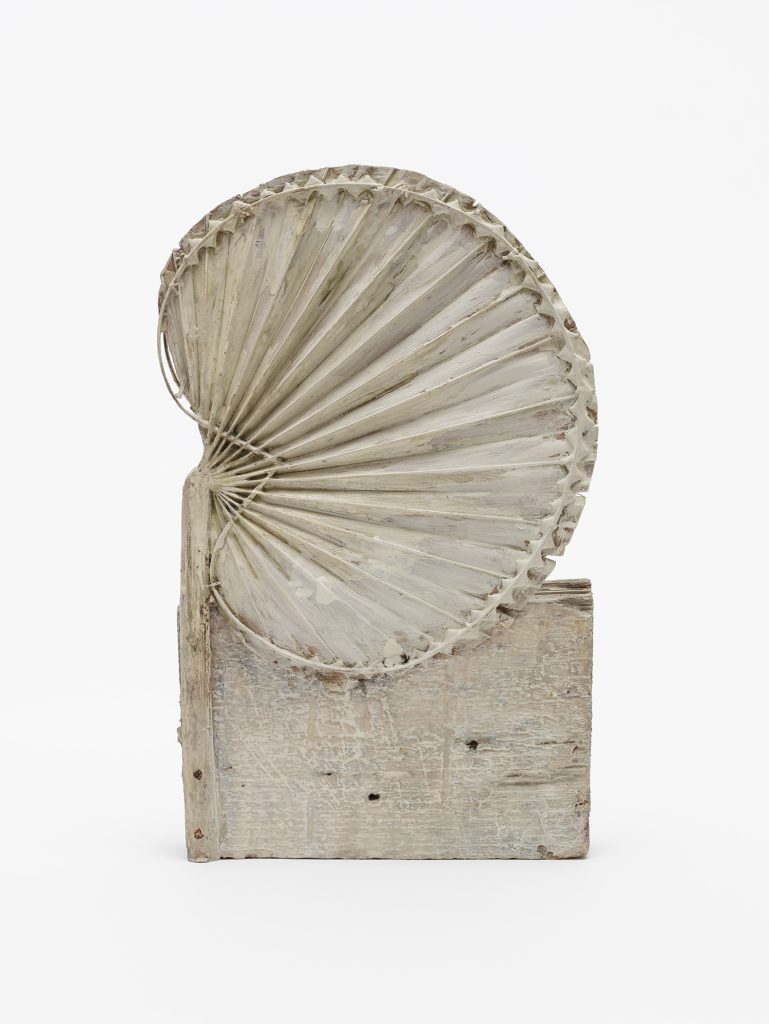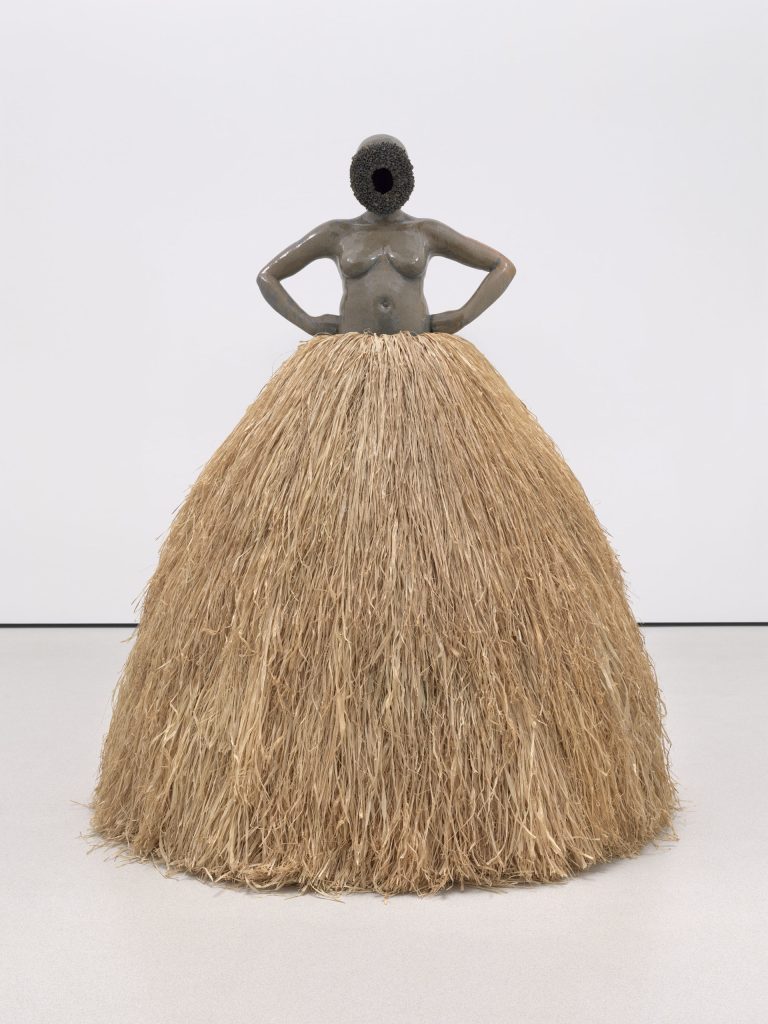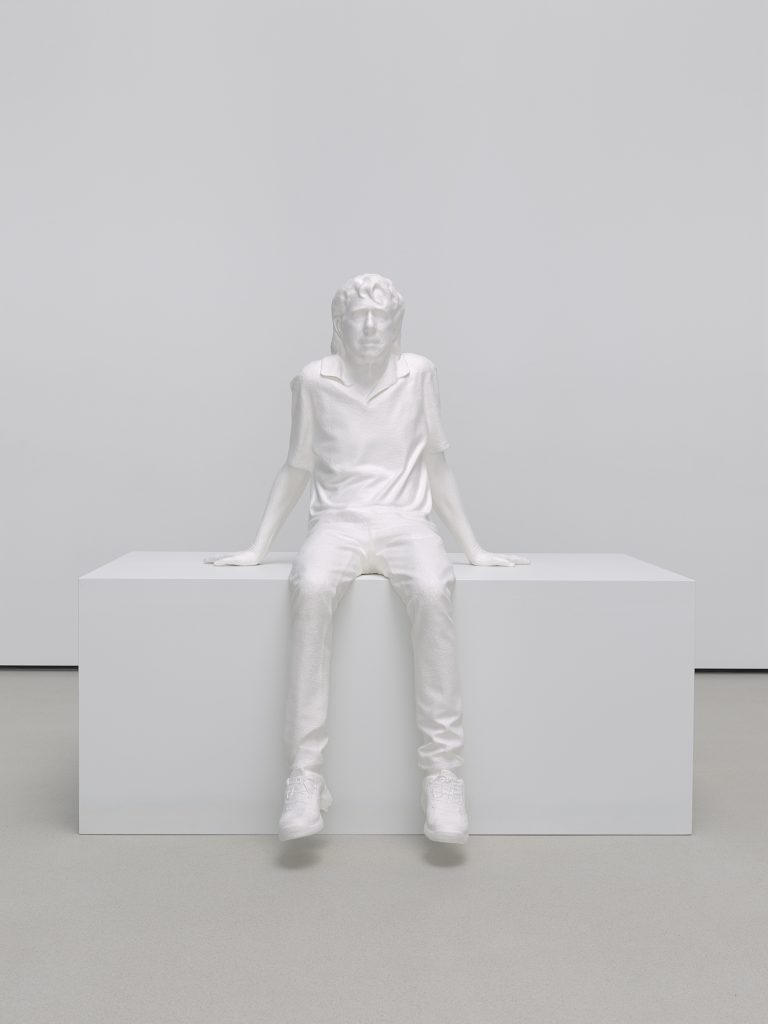In the winter, the trees lift their bare branches in sculptural elegance against a gray sky. In the summer, grasses and wild flowers sway gently in the sunshine. In their midst sit the windowless pale concrete blocks that make up the Glenstone Museum, named for nearby Glen Road in Potomac, Maryland, and the stone indigenous to the area.
The museum is located about 15 miles from Washington D.C. The park of woods and meadows surrounding the buildings is dotted with about a dozen sculptures gracing the gentle rolling landscape, and offering visitors several walking paths.
Once inside the museum, the severity of the exterior gives way to light filled exhibition spaces, or rooms, most with ceiling skylights. An interior walkway connecting the rooms faces a central pond of lily pads and floating grasses. The result is that despite the windowless exterior, the inside of the pavilion is filled with light and a sense of peace.
Some exhibition rooms have but a single piece of art on the wall; some have solo artists’ pieces; others have works representing several artists. In one room, Robert Guber’s “Untitled 1992” work covers all four walls, a combination of paint and objects creating a deep green forest with pale sinks of running water, mounds of newspapers and other symbolic objects.
Room number 7 is like a small library with books along one wall facing a large picture window that overlooks a wooded hillside. In the center of the room is a beautiful, gleaming maple and hickory bench designed by Martin Puryear. A visitor seated there enjoys a contemplative moment of visual pleasure.
Glenstone Museum opened in 2006 and originally admitted visitors two days a week. In 2018, the museum was expanded and the Pavilion was constructed, a concrete multi faceted building made to resemble a hilltop town. At present, the museum is open Thursday through Sunday. Although admission is free, timed tickets are required and can be obtained through the museums’s website (glenstone.com). Visitors are greeted at the entrance building and then walk, or take a shuttle bus, up the hill to the museum itself.
The museum is the vision of billionaire American businessman Mitchell P. Rales. His wife, Emily Wei Rales, is the director. Rales purchased a former fox hunting club in Potomac in order to build a house wherein he started collecting art in 1990. Following a near-death accident on a helicopter trip in Russia, Rales turned to philanthropy and his home became a private contemporary art museum.
Glenstone’s collection of about 1,300 post-World War II works from around the world consists of paintings, installations and both indoor and outdoor sculptures by artists who have already exhibited for at least 15 years. Its mission is to “collect iconic examples of modern and contemporary art that represent pivotal shifts in the perception and understanding of the art of our time.” To that end, the collection includes works by artists as diverse as Marcel Duchamp and Jean-Michel Basquiat. Many of the artists in the collection are well known, others less so.
Currently, on view are works by artists Kara Walker, Cecily Brown, Michael Heiser, Cy Twombly, Simone Leigh and Brice Marden, among others.
While most of the art on display comes from the collection, Glenstone also presents temporary exhibitions. A recent exhibit was a powerful and moving show of works by Doris Salcedo, a Columbian artist who takes every day objects and literally breaks then into pieces, then reconstructs the pieces but as broken objects, examples of the world’s brutality and cruelty, violence and oppression.
A major exhibition of Ellsworth Kelly at 100 will open on May 4, 2023. Also opening in May is Kare Walker’s Katastwof Karavan, a carriage-like calliope. Its steel outside features a number of silhouettes; the inside houses the steam powered calliope. Calliops are musical instruments with notes produced by steam whistles. They were popular among showboats and traveling fairs. The Karavan will premiere on May 19 and 20 with live performances by composer and artist Jason Moran and with artist Kara Walker. The calliope will be activated through September 2023.
Sculptures are scattered throughout the grounds in bucolic settings. Near the entrance to the museum sits Charles Ray’s shining silver “Horse and Rider.” A large Tony Smith “Smug” is embraced by a grove of trees. Works by, among many others, Michael Heiser, Jeff Koons, Andy Goldsworthy and Richard Serra sculptures are represented..
An outstanding feature at the museum is the impressive knowledge and amiability of the guides, dressed in gray, stationed in each of the exhibition rooms. Far more than guards, they have all been trained extensively about the art exhibited in the rooms to which they have been assigned. They are eager to answer questions and do so in an informed manner. Most are art students or otherwise involved in the art world; they are paid employees rather than being volunteer docents as is the case in other museums.
Nestled among the trees, Glenstone’s Cafe serves light meals. Unfortunately, the food has declined in quality and variety since pre-covid days. Gone are the pitchers of cool water and vases of wild flowers adorning the communal tables, although perhaps they will return with warmer weather. The spring menu includes soup, a ham and cheese sandwich, a salad, a limited cheese plate, and a salmon dish. The menu descriptions sound more enticing than what arrives on the plate. Prices range from $9 for the soup to $27 for the cheese plate, $5 for pecan tart and $6 for oatmeal raisin cookies. The Cafe also serves wine as well as lemonade, apple cider and other drinks. It’s a pleasant, informal spot in which to relax and rest your feet after exploring the museum.
Glenstone is open Thursday through Sunday from 10 a.m. to 5 p.m. Admission is free, but timed tickets must be obtained from the museum website at glenstne.com. There is a free, good sized parking lot near the entrance to the museum. The museum is wheelchair accessible.
By Corinna Lothar
Featured photo: Water Court at the Pavilions, Photo: Iwan Baan, Courtesy: Glenstone Museum

